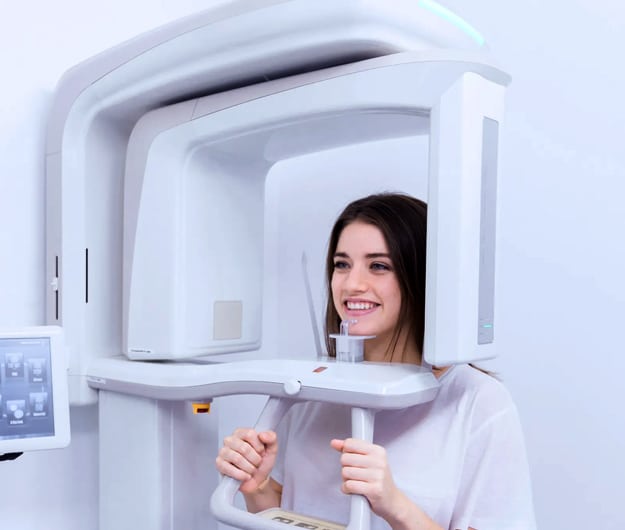
What 3D CT CONE BEAM is?
3D dental imaging, also known as Cone Beam Computed Tomography (CBCT), allows us to see a larger portion of the anatomy with improved clarity compared to traditional film-based dental x-rays.
What does 3D CT imaging entail?
Traditional x-rays use radiation waves to capture 2D images of small areas of the body, including specific sections of the smile for dentists. However, 3D computed tomography (CT) scans offer more detailed images of oral and facial structures, providing a better understanding of their overall function. Unlike flat tooth images, CT scans allow us to view a 3D image of a damaged tooth from different angles, examining every aspect. This capability extends beyond individual teeth, as CT scans enable us to visualize every aspect of the entire smile.
What is the purpose of using 3D CT imaging?
We recommend using 3D CT scans to improve dental care for patients in different scenarios, including:
- Assessing and planning treatment for individuals with temporomandibular joint (TMJ) dysfunction
- Creating surgical guides for dental implant placement and attaching replacement teeth
- Preparing for oral surgery procedures like tooth extractions
- Ensuring the safety and effectiveness of root canal therapy
What advantages does 3D CT scanning offer in dental care?
In our office, we utilize 3D CT scans to enhance the patient experience in various ways. Patients can view 3D images of their smile on chairside computer monitors, helping them better understand areas of concern and potential treatment options. We can also highlight or zoom in on specific areas, providing patients with a clearer perspective on their oral health issues. The digital files can be instantly shared with dental labs, insurance providers, and specialists, speeding up the treatment process. Additionally, these digital files can be easily stored, reassessed, and compared with other x-rays, ultimately improving the effectiveness and success rate of dental treatments.


